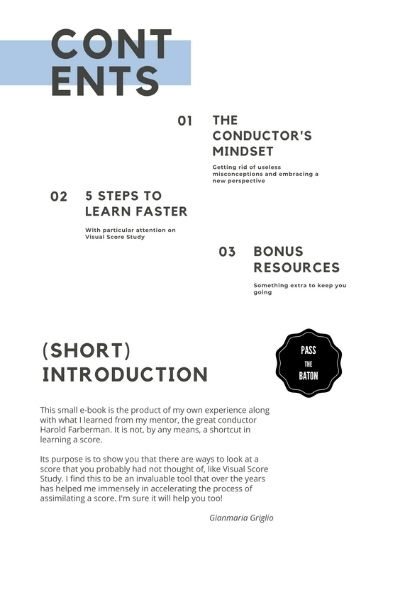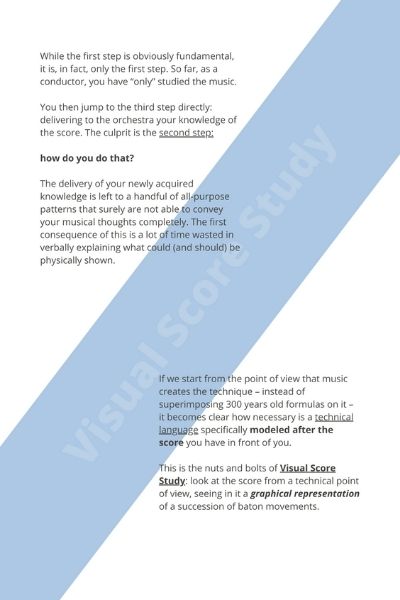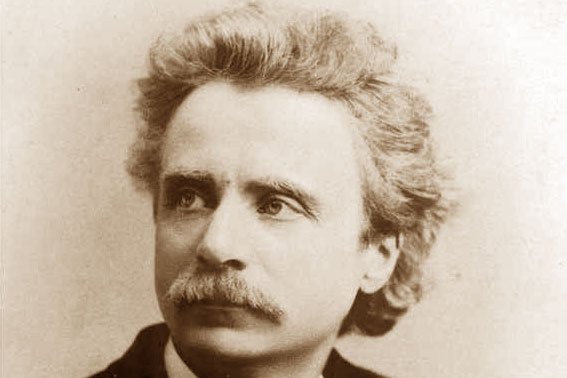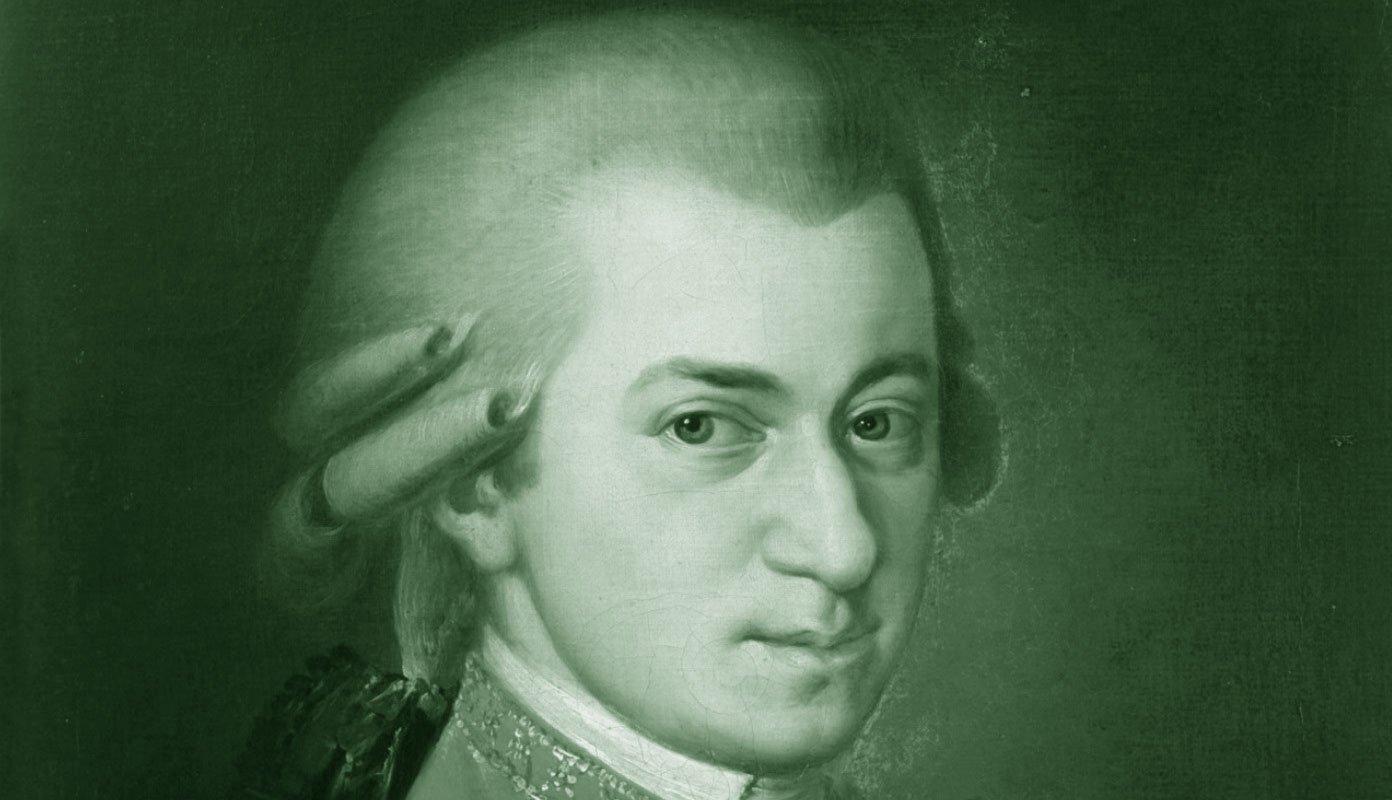The immediate conductor’s space is, quite obviously, the podium. The working area is determined by the structure of your own body: taller, shorter, longer arms, and so forth, and therefore slightly changes from conductor to conductor. There are 3 main key areas to look out for:
Body placement
You should think of yourself as a tree, firmly planted into the podium: your legs are the roots, slightly separate in order to give you maximum stability. Try to get into the good habit of not walking on the podium while conducting: it’s distracting and forces the players to constantly shift their focal point. Same goes for bouncing on your knees.
While your legs are the roots of your tree, your arms are the branches and can move anywhere they see fit. A solid posture will give your conducting more focus; useless physical motions that intrude in the conductor’s space, on the other hand, will take the attention away.
Players will stop looking and the audience will be distracted by a spectacle, and stop listening to the music.
Continuing with the tree analogy, your torso (or the trunk of the tree) should always face the orchestra and not turn from section to section.
Avoiding distractions
Let’s take a typical seating: fist violin on the left of the podium, celli on the right. Let’s take, for example, the beginning of Bruckner 7: if you turn completely towards the celli on bar 3, the first and second violins will lose the visual of the baton, looking now at your back; not to mention that the horn would be completely ignored; then you’ll need another movement for the viola entrance; we haven’t played one full phrase yet, in an hour-long symphony, and the conductor’s movements have already disrupted the line instead of giving it focus.
I don’t mean with this that you should feel paralyzed in one position and not move your body while conducting: but the torso is meant to breathe with the music, and move left and right from the hips, not the feet. Besides, giving your back to an entire section is not exactly good manners.
There is one thing that I would like to point out: crunching your body under the stand to make a pianissimo, or jumping to make a fortissimo is not the way to go. Again, it will distract both the audience and the players.
Keep in mind that whenever you move around in unpredictable ways, the players will need to rapidly look for a different focal point. It’s like trying to follow a moving target while keeping up with the playing, the color, the rhythm, etc. Something’s gotta give: at one point or another, the players will stop looking up because what they see is more distracting than helpful.
The eyes
One of the most powerful weapons in the conductor’s arsenal are the eyes: they can truly make a difference between a good and an excellent performance. You can connect with the players, alert them of an important entrance, inspire them.
Since the eyes are so important, it goes by itself that they should be clearly seen: if you wear glasses, choose a frame that doesn’t conceal them, or wear contacts. Make sure your head is not buried in the score, that’s one of the worse things you can do to an orchestra. Also, make sure your head is not keeping the beat instead of your baton.
The baton
Speaking of which: the baton. Contrary to what some people may say, the baton is not the conductor’s instrument – that would be the orchestra. The baton is a device, a tool that helps a conductor gain clarity in showing the music and leading the players. It’s an extension of the conductor’s arm.
Batons vary in form and shape: longer, shorter, wooden, plastic, with a long bulb, with a round corky bulb. There’s a history of the baton which is longer than one would normally imagine. The important part of a baton, from a purely practical point of view, it’s its balance: it should keep the balance on one finger, between the bulb and the shaft. This way, when you hold it as a conductor, it becomes weightless.
How do we hold it?
Open the palm of your hand and put the bulb in the center of it; then gently wrap your fingers around. There needs to be no tension in your fingers or hand whatsoever. A good baton grip is essential.
Holding the baton this way allows you to keep the most important part of your body unlocked: your wrist.
This is crucial: the wrist is the primary source of the pulse, which is essential for the orchestra: players need a pulse, not a beat. The wrist is the most effective way to deliver a pulse and that’s why it’s so important for it to be free to move.
All of this and a whole lot more can be found also in my Pass the Baton course. If you have any question or comment please do let me know in the box below! Happy conducting!
Start improving your conducting today with this Pass-the-baton video course created exclusively for iClassical-Academy
[ET_MONARCH_INLINE_SHORTCODE]












0 Comments